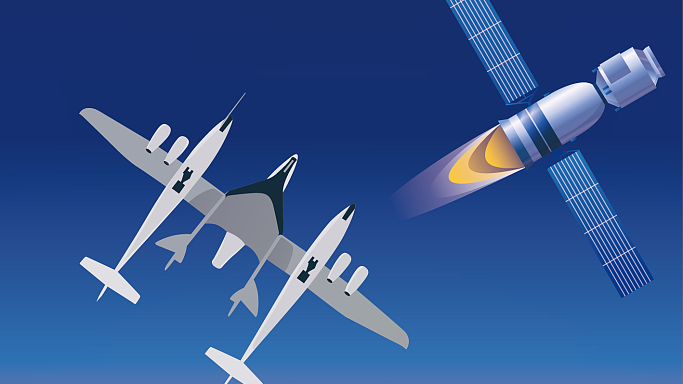
An illustration of commercial suborbital space travel. /CFP
An illustration of commercial suborbital space travel. /CFP
China is expected to send its first group of commercial passengers to suborbital space in 2025, with each flight priced between 2 and 3 million yuan (around $287,200 to $430,800), said a senior rocket scientist.
At present, there are three modes of space travels, according to Yang Yiqiang, a senior rocket scientist who was the general director of the Long March 11 rocket project in 2018, and the founder of Beijing-based rocket company CAS Space.
The first is entering the space station, which sets strict requirements on physical and psychological conditions of the tourists.
The second takes tourists into space on a cargo aircraft used to lift the another spacecraft to release altitude. Virgin Galactic once announced these types of trips, priced at $450,000 per seat, according to media reports.
The third mode, according to Yang, and the one China will focus on, is suborbital space travel. This will be more suitable for most passengers.

(L-R) An illustration of the second kind of commercial space travel with twin-fuselage configuration designs, and an illustration of the first kind of space travel with flight entering the space station /CFP
(L-R) An illustration of the second kind of commercial space travel with twin-fuselage configuration designs, and an illustration of the first kind of space travel with flight entering the space station /CFP
China-U.S. commercial space race
The U.S. began commercializing its space sector in the 1980s, and the industry relatively matured when SpaceX was established in 2002.
China started the sector comparatively late in 2015, but the industry has already taken shape with high-speed development.
China will likely catch up with the development level of the U.S. in the commercial space sector within 10 years, Yang said, noting that the sector in China has entered a "2.0 era" driven by applications and market forces, which is different to the "1.0 era" which featured basic manufacturing and research and development (R&D).
According to an industry report, China in 2021 had more than 370 enterprises focused on satellite manufacturing, rocket launching, and relevant downstream services based on orbiting satellite.
However, the scale of Chinese commercial players in the sector is still comparatively small, and few of their rocket and satellite businesses yield profits.
Yang said that domestic commercial space industry should be boosted by market demands and technological innovations. "The key for the development of China's commercial space sector is application rather than rockets or satellites."
"We need to ensure that common people have access to the sector."
Read More:
China is world's 2nd largest commercial satellite owner
China completes first test flight of reusable liquid rocket engine

